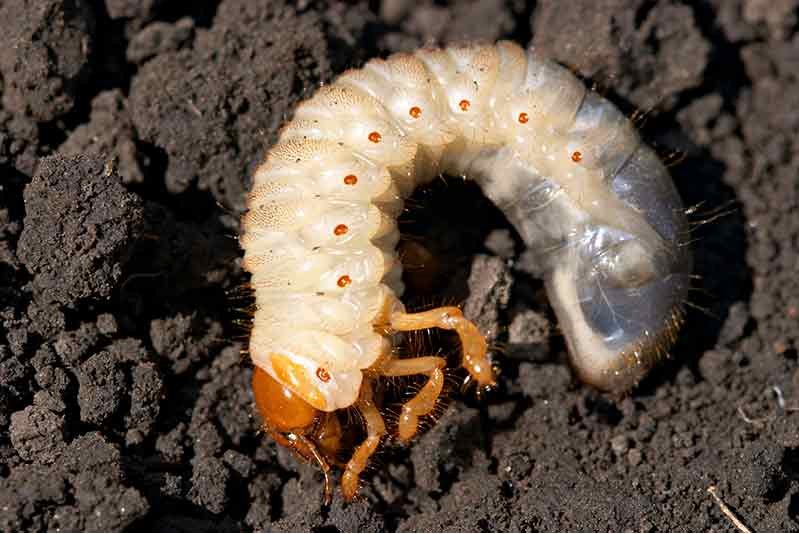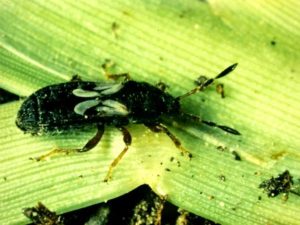When it’s healthy, thick, and full of Green Grass, your Lawn is one of the most inviting parts of your home landscape. But when your Lawn is brown, spotty or yellowing due to pest invasion, it quickly loses its appeal. Learning about the various pests that threaten your green grass – and then arming yourself with an effective treatment plan – will help ensure your lawn stays healthy and beautiful.
Servicing:
- Destrehan
- Kenner
- Metairie
- New Orleans
- St. Rose
- Slidell
- West Bank
How To Identify Lawn Pests And The Damage They Cause
The best way to control lawn pests is to identify them correctly, get to know their life cycles and symptoms, and then treat them promptly and properly at optimal times.
Common signs that Lawn pests have invaded your turf include brown spots, dead and dying grass patches, wilting blades, bite marks on grass, and, of course, insects in the grass or turf layer. Signs of underground pest damage include thin or missing roots and holes in the soil.
The following pests can cause significant damage to your lawn:

Grubs (beetle larvae)
Among the most damaging of all lawn pests, white grubs (Phyllophaga species) are the larvae of a wide variety of scarab beetles, including masked chafers and Japanese beetles. In the spring, summer and early fall, these plump, c-shaped larvae feast on lawn grass roots just below the soil surface.
Life cycle: White grubs that become common beetles, complete their life cycle in one year. In midsummer eggs are laid, these eggs hatch in two weeks and the new grubs soon begin feeding on grass roots. By fall, with cold weather approaching, the maturing grubs burrow several a few inches into the soil and go dormant for winter. As the ground warms in early spring, the white grubs make their way to the soil surface and begin feeding on green grass roots again.
Symptoms: Grub damage begins with signs of wilted grass blades, followed by brown patches and eventual death. Spongy, grub-damaged turf lifts easily off the soil in spring and summer to reveal grubs underneath. If you see crows, moles feeding on your lawn, they are most likely searching a grub meal.
 Chinch Bug… Don’t Be Fooled By Their Small Size
Chinch Bug… Don’t Be Fooled By Their Small Size
Turf grass can be attacked by several types of chinch bugs, including the common hairy chinch bugs, which inhabit different areas of the country. Chinch bugs are sap-sucking insects that feed on grass. Chinch bugs are sap-sucking insects that feed by sucking on grass blades. While feeding, chinch bugs secrete an anticoagulant that causes grass to stop absorbing water. As a result, the grass withers and dies.
Life cycle: Chinch bugs lay eggs in green grass and produce at least two generations from spring to early fall, when the weather begins to cool. Their eggs hatch in 20 to 30 days, and the young bugs soon begin feeding on the Green Grass. They mature in four to six weeks and then mate, repeating the cycle of life. When the weather cools in fall, adult chinch bugs seek shelter at the base of grass stems, where they remain inactive until weather warms the following spring.
Symptoms: Chinch bug damage to lawns is most visible from May to September, when the bugs are actively feeding. Irregular patches of turf first take on a purple tinge, and then wilt, yellow and turn brown. Due to the wilting and dryness of the grass, the damage is often mistaken for drought stress, but closer inspection will reveal the true culprit.
 Sod Webworm
Sod Webworm
Sod webworms are the turf-damaging larvae of the sod webworm moth. The young sod webworm matures to about 1 inch in length and becomes brown or green in color with dark spotting. The dingy, gray-tan adult moth has a distinctive protrusion that looks like a double snout.
Life cycle: Sod webworms have two to three generations each year in the spring and summer. Adult webworm moths lay eggs on green grass blades at night; the eggs hatch within seven days. Young webworm larvae feed at night and hide during the day in silken burrows they create in the grass. In five weeks, they transform into adult moths.
Symptoms: Sod webworms eat grass blades and entire stems, leaving brown patches behind. Their damage is swift and extensive. The turf is often riddled with holes from birds foraging for worms, and silken tunnels are found at turf level.
Armyworm
 As the name implies, armyworms do battle with your lawn. These 1- to 2-inch-long pests vary in color, from gray to yellow to pink, depending on type. Armyworms turn into brown moths that are easy to distinguish at night. As they gravitate toward light, they reveal their furry abdomens.
As the name implies, armyworms do battle with your lawn. These 1- to 2-inch-long pests vary in color, from gray to yellow to pink, depending on type. Armyworms turn into brown moths that are easy to distinguish at night. As they gravitate toward light, they reveal their furry abdomens.
Life cycle: Armyworms produce two to three generations throughout the spring and summer months. The adult armyworm moths lay clusters of small, white eggs that hatch within a week. The wormlike larvae then feed for two to three weeks before turning into moths.
Symptoms: Armyworms eat grass blades and stems, and they skeletonize leaves on other plants as well. They generally take shelter from sun and heat during the day and feed most heavily on your lawn in the evening, at night, or in the early morning. As the worms eat the grass, they create circular bare spots in lawns. When invasions are heavy, the lawn appears to move.
Effective Lawn Pest Control
For DYI home owners it would be best to correctly identify the pest then go to your local Feed store to talk with local expert about recommendations. Feed Stores and nurseries typically have better products than your big name stores.
Lawn pest damage often goes unnoticed and unchecked until major damage occurs. Fortunately, you can quickly and efficiently control and prevent pests such as armyworms, sod webworms, grubs, and chinch bugs with the help of Lawn Doctor of Lakeview Yard Armour®
Lawn Doctor of Lakeview® Pest Control Granules Prevents and controls more than 50 insect pests by contact, working above and below the surface. This highly effective answer to lawn pest problems won’t harm plants, blooms or lawn when used as directed. Use it on, ornamental and flower gardens, and around your home as well. Plus, it keeps protecting you and your family from insect pests all year long!!
A pest-free lawn full of Green Grass is a pleasant place for family, friends, and pets to gather and enjoy your outdoor spaces. Keep an eye out for these common turf nuisances and act promptly when they strike. If the problems becomes to much please give Lawn Doctor of Lakeview a call (504) 399-1144 to schedule a FREE evaluation!
Servicing
- Destrehan
- Kenner
- Metairie
- New Orleans
- St. Rose
- Slidell
- West Bank
